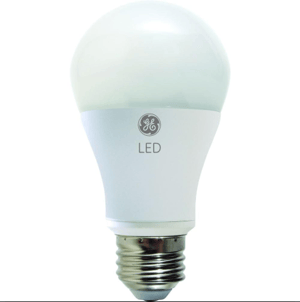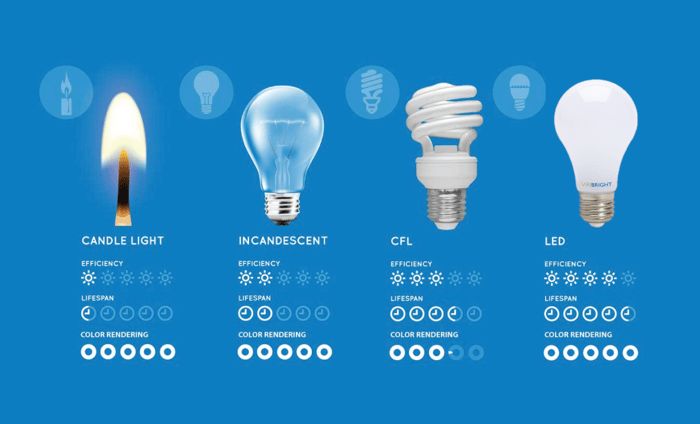 Many people are scared away by the price but these modern light bulbs are highly efficient and may pay for themselves in as a little as a year. LED's are truly the best choice for your wallet and for the environment when it comes to lighting. Here's a look at how they stack up in comparison to other light bulbs you'll find on the shelf.
Many people are scared away by the price but these modern light bulbs are highly efficient and may pay for themselves in as a little as a year. LED's are truly the best choice for your wallet and for the environment when it comes to lighting. Here's a look at how they stack up in comparison to other light bulbs you'll find on the shelf.
An incandescent light bulb produces light by heating a filament wire to a high temperature until it grows. Only 10 to 20% of the energy that powers a traditional bulb is emitted as light and the rest is wasted as heat. The average incandescent that you would put in a table lamp uses 60 watts of power and lasts about 2,000 hours.
A CFL light bulb uses a tube filled with argon and mercury gases that emit light once excited with an electric current. While these use far less energy and last longer than your traditional incandescent, about 15 watts to match a 60 watt, there are some drawbacks. CFL lights often flicker or fade on, adding to their generally sub-par quality of light. Also, the mercury vapor is harmful to your health if the tube is broken so they must be disposed of properly once they burn out.

The LED light bulb, or light emitting diode, is the most energy efficient lighting option on the market today. These contain small computer chips, or drivers, that push electricity through a semiconductor to produce light. We have been using this technology for years in our digital clocks, road signs, and even televisions. LED light bulbs produce almost no heat
DID YOU KNOW?
You can receive rebates for installing LED light bulbs for your home or business. Call Walking Mountains Sustainability Energy Programs and Energy Smart Colorado at (970)328-8777 or visit the Energy Resource Center at Walking Mountains to learn more or for a cost/savings analysis before you buy.








